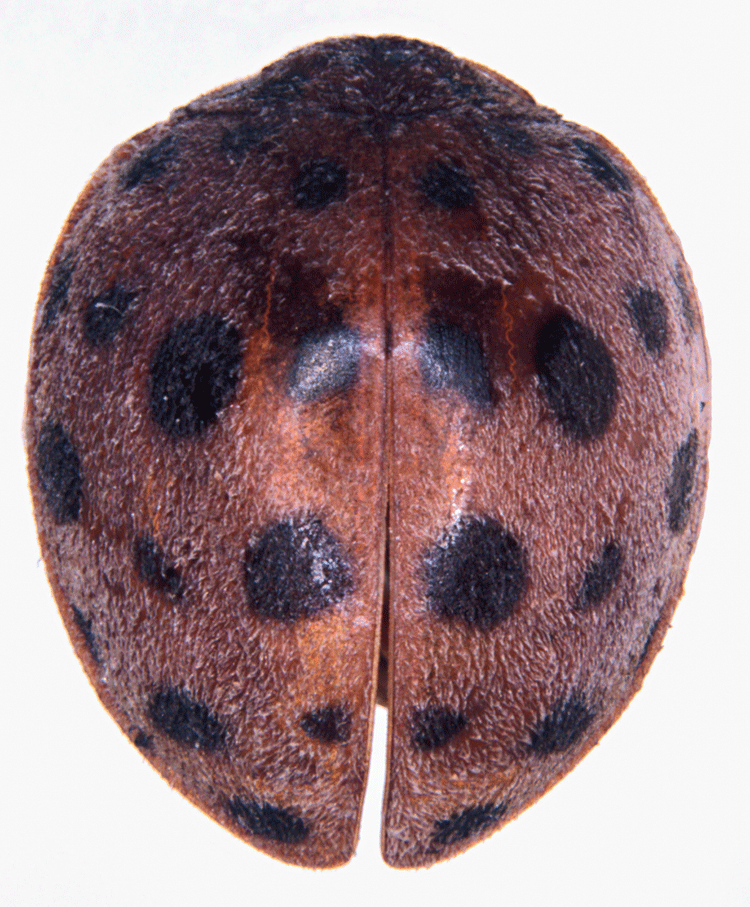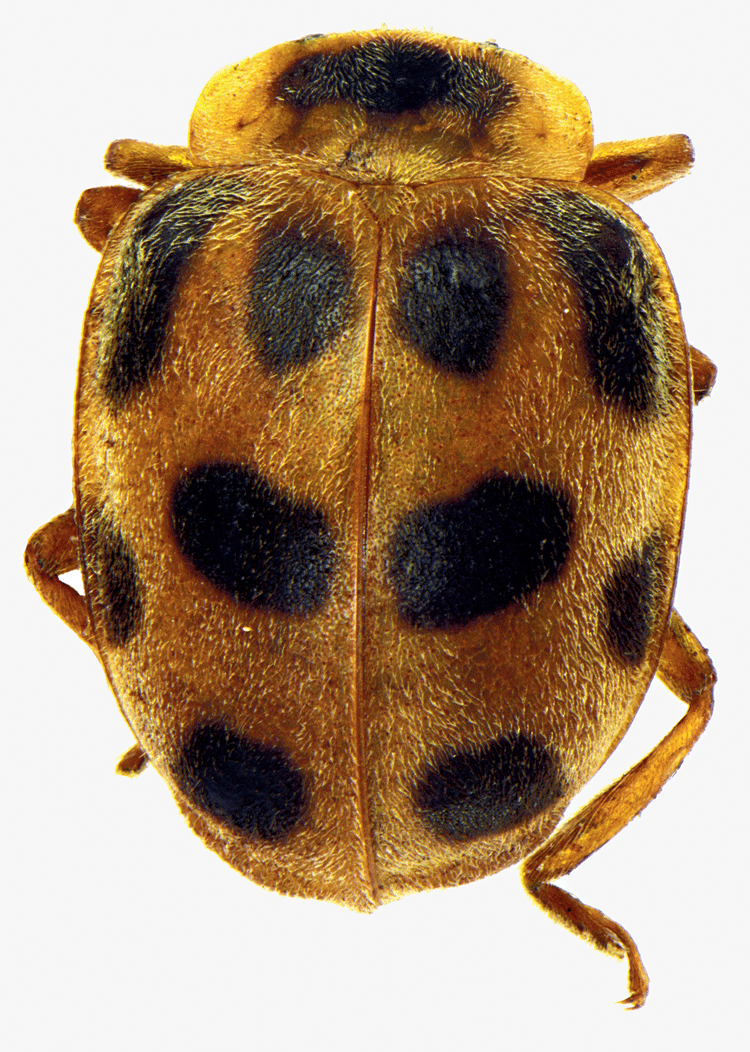
Henosepilachna vigintioctomaculata

Afissa rana
Arunachal Pradesh is not only known for butterflies and flowers, but also for ladybird beetles.
Researchers from Zoological Survey of India have reported 26 new ladybird beetles in Arunachal Pradesh.
“The present study, collectively with the previously published data (six species), reports a total of 44 species of ladybird beetles belonging to 22 genera and six tribes of family Coccinellidae, from the state. Among them, 38 species were examined and illustrated, including three new species from India: Illeis shensiensis Timberlake, Afissa rana and Henosepilachna vigintioctomaculata. Of these, 26 are new to Arunachal Pradesh and there are three new combinations, which were transferred to genus Afissa,” said Zoological Survey of India senior scientist Devanshu Gupta.
The other team members are Priyanka Das and Kailash Chandra. The study was published in the journal Bonn Zoological Bulletin.
“Ladybird beetles are classified under the family Coccinellidae, which are known as successful biological control agent, for feeding on aphids, mites, scale insects and other harmful creatures, which thrive on crops,” Gupta said.
He said there are four biodiversity hotspots in India. Among them, Eastern Himalayas comprises entire Arunachal Pradesh. “The diversity of ladybird beetles was less in this area owing to lack of exploration.”
Gupta said the name “ladybird” originated in the UK, where the insects became known as “Our Lady’s bird” or “Lady Beetle”.
Mary (Our Lady) was often depicted wearing a red cloak in early paintings, and the ladybird spots were said to symbolise her seven joys and seven sorrows.
“They are one of the most important groups of natural predatory or enemy complex of many horticultural and agricultural crop pests. Therefore, they play a major role in integrated pest management by reducing the use of chemical pesticide. Good diversity in Arunachal Pradesh shows that it has great potential of controlling the aphid pest population through biological control,” Gupta added.
The materials for the present study were collected during recent faunistic surveys at Dihang-Dibang biosphere reserve, Namdapha National Park and Tawang district.










